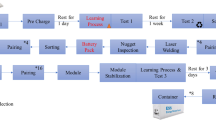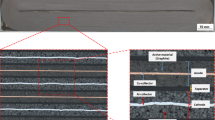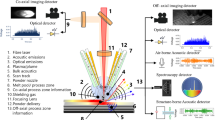Abstract
In this study, we facilitated the electrode welding of a micro-battery utilizing a laser through the application of a convolutional neural network (CNN) for the classification of micro-battery welding quality, utilizing a dataset comprised of battery-welded images. While prior studies focused on enhancing CNN performance through virtual image generation and conversion, our approach distinguishes itself by optimizing the CNN’s performance through the adjustment of hyperparameters within the feature extraction section and the application of an image filter. To address insufficient image data, data augmentation and image shift techniques were implemented. The investigation delved into the influence of hyperparameters on CNN performance during the inspection of welding images, where the grayscale filter exhibited commendable performance in the context of battery welding images. Evaluation of the classification performance was conducted using a confusion matrix, revealing accurate identification of the two welding conditions. The experiments conducted in this study not only established the viability of the laser welding process but also demonstrated the potential of vision inspection using deep learning, presenting a practical solution for the micro-battery process.
Similar content being viewed by others
Abbreviations
- BCE :
-
Binary cross-entropy
- SCC :
-
Sparse categorical cross-entropy
References
P. Stavropoulos et al., Quality assurance of battery laser welding: A data-driven approach, Procedia CIRP, 111 (2022) 784–789.
R. Miao et al., Online inspection of narrow overlap weld quality using two-stage convolution neural network image recognition, Machine Vision and Applications, 32 (2021) 1–14.
Y. Yang et al., A lightweight deep learning algorithm for inspection of laser welding defects on safety vent of power battery, Computers in industry, 123 (2020) 103306.
H. Zhang, X. Di and Y. Zhang, Real-time CU-net-based welding quality inspection algorithm in battery production, IEEE Transactions on Industrial Electronics, 67 (12) (2020) 10942–10950.
A. Tantrapiwat, Spot welding defect detection using synthetic image dataset on convolutional neural networks, 2021 7th International Conference on Engineering, Applied Sciences and Technology (ICEAST), Pattaya, Thailand (2021) 16–19.
K. Chun, Non-destructive inspection system development for secondary battery welding part, Indonesian Journal of Electrical Engineering and Informatics (IJEEI), 10 (4) (2022) 867–878.
W. Hou et al., Automatic detection of welding defects using deep neural network, Journal of Physics: Conference Series, IOP Publishing, 933 (2018) 012006.
Y. Yang et al., An evaluation method of acceptable and failed spot welding products based on image classification with transfer learning technique, Proceedings of the 2nd International Conference on Computer Science and Application Engineering, New York, USA (2018).
S. Sudhagar, M. Sakthivel and P. Ganeshkumar, Monitoring of friction stir welding based on vision system coupled with machine learning algorithm, Measurement, 144 (2019) 135–143.
G. Liu et al., Prediction of high power laser welding status based on PCA and SVM classification of multiple sensors, Journal of Intelligent Manufacturing, 30 (2019) 821–832.
D. Younes et al., Enhancement in quality estimation of resistance spot welding using vision system and fuzzy support vector machine, Symmetry, 12 (8) (2020) 1380.
O. Badmos et al., Image-based defect detection in lithium-ion battery electrode using convolutional neural networks, Journal of Intelligent Manufacturing, 31 (2020) 885–897.
X.-G. Zhang, J.-J. Xu and G.-Y. Ge, Defects recognition on X-ray images for weld inspection using SVM, Proceedings of 2004 International Conference on Machine Learning and Cybernetics (IEEE Cat. No. 04EX826), Shanghai, China (2004).
R. V. Bàrbara Dora, Deep learning for quality prediction in dissimilar spot welding DP600-AISI304, using a convolutional neural network and infrared image processing, European Modeling and Simulation Symposium, Online (2020).
W. Piriyabunjerd and C. Janya-anurak, Classification of the resistance spot weld failure mode using convolutional neural network, 2021 Second International Symposium on Instrumentation, Control, Artificial Intelligence, and Robotics (ICA-SYMP), Bangkok, Thailand (2021).
A. Mikołajczyk and M. Grochowski, Data augmentation for improving deep learning in image classification problem, 2018 International Interdisciplinary Ph.D. Workshop (IIPhDW), Swinouscie, Poland (2018).
A. Torabi and F. Kolahan, Optimizing pulsed Nd: YAG laser beam welding process parameters to attain maximum ultimate tensile strength for thin AISI316L sheet using response surface methodology and simulated annealing algorithm, Optics and Laser Technology, 103 (2018) 300–310.
Y.-F. Tzeng, Process characterisation of pulsed Nd: YAG laser seam welding, The International Journal of Advanced Manufacturing Technology, 16 (1) (2000) 10–18.
A.-M. El-Batahgy, Effect of laser welding parameters on fusion zone shape and solidification structure of austenitic stainless steels, Materials Letters, 32 (2–3) (1997) 155–163.
N. S. Shanmugam, G. Buvanashekaran and K. Sankaranarayanasamy, Some studies on weld bead geometries for laser spot welding process using finite element analysis, Materials and Design, 34 (2012) 412–426.
G. Casalino et al., Finite element model for laser welding of titanium, Procedia CIRP, 33 (2015) 434–439.
W. Han, J. Byeon and K. Park, Welding characteristics of the Inconel plate using a pulsed Nd: YAG laser beam, Journal of Materials Processing Technology, 113 (1–3) (2001) 234–237.
C. Walsh, Laser Welding-Literature Review, Materials Science and Metallurgy Department, University of Cambridge, England, 1 (2002).
Y.-T. You and J.-W. Kim, Fiber laser welding properties of copper materials for secondary batteries, Materials Science, 23 (4) (2017) 398–403.
S. Khan et al., A Guide to Convolutional Neural Networks for Computer Vision, Springer, 8 (2018).
N. Ma et al., Shufflenet v2: Practical guidelines for efficient cnn architecture design, Proceedings of the European Conference on Computer Vision (ECCV) (2018).
M. Hashemi, Enlarging smaller images before inputting into convolutional neural network: zero-padding vs. interpolation, Journal of Big Data, 6 (1) (2019) 1–13.
Acknowledgments
This work was supported by the GRRC program of Gyeong-gi province [(GRRC TU Korea2023-B02), Development of docking systems and process technologies to automate 3D printing post-processing]. This work was also supported by Korea Institute for Advancement of Technology (KIAT) grant funded by the Korea Government (MOTIE) (P0008458, HRD Program for Industrial Innovation).
Author information
Authors and Affiliations
Corresponding authors
Additional information
Beomjin Kim is currently working at the Korea Institute of Science and Technology (KIST). He received his B.S. in Mechanical Engineering in 2020 from the Tech University of Korea and his M.S. in Mechatronics Engineering from the Tech University of Korea in 2023. His research focuses on AI manufacturing systems and robot systems. His research work was to effectively apply machine learning and deep learning to machine systems. He is currently working to form a three-dimensional map of the robot.
Wonshik Park is the founder and CEO of TWorks Inc., a laser material processing machine supplier in South Korea since 2017. He received his Ph.D. degree in mechanical engineering in 2002, and worked as a research engineer for Mando Corporation from 1994 to 2001, as a postdoc fellow for Massachusetts Institute of Technology from 2003 to 2004, as a research engineer for Samsung SDI from 2004 to 2016. His main interest includes applications of machine vision, machine intelligence to his laser material processing machines.
Kihyun Kim received B.S., M.S. and Ph.D. degrees in mechanical engineering from the Korea Advanced Institute of Science and Technology (KAIST), Daejeon, South Korea, in 1999, 2001, and 2006, respectively. Since 2015, he has been an Associate Professor in the Department of Mechatronics Engineering, Tech University of Korea. His current research interests include the design, control, fault-diagnosis of a high-performance mechatronics system, e.g., a Semiconductor-Display manufacturing equipment, Robot machining system.
Hyo-Young Kim is Professor of Mechatronics Engineering at Tech University of Korea. He received his B.S. in Mechanical Engineering in 2007 from the University of Hanyang University, Korea, and M.S. and Ph.D. degrees in Mechanical Engineering from the KAIST, in 2009 and 2013. He worked as a Principal Researcher at KITECH(Korea Institute of Industrial Technology) until 2021. Since 2022, he has been a Professor of mechatronics engineering at Tech University of Korea. His research focuses on the fields of precision mechatronics systems and AI robot manufacturing systems. He is currently work on precision stage and active vibration control system at semicondouctor manufacturing system.
Rights and permissions
About this article
Cite this article
Kim, B., Park, W., Kim, K. et al. CNN-based classification of the laser assembly process for ultra-small batteries. J Mech Sci Technol 37, 6181–6192 (2023). https://doi.org/10.1007/s12206-023-2411-4
Received:
Revised:
Accepted:
Published:
Issue Date:
DOI: https://doi.org/10.1007/s12206-023-2411-4




